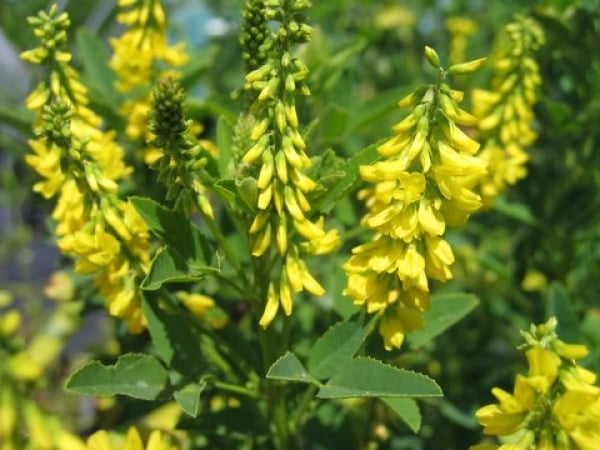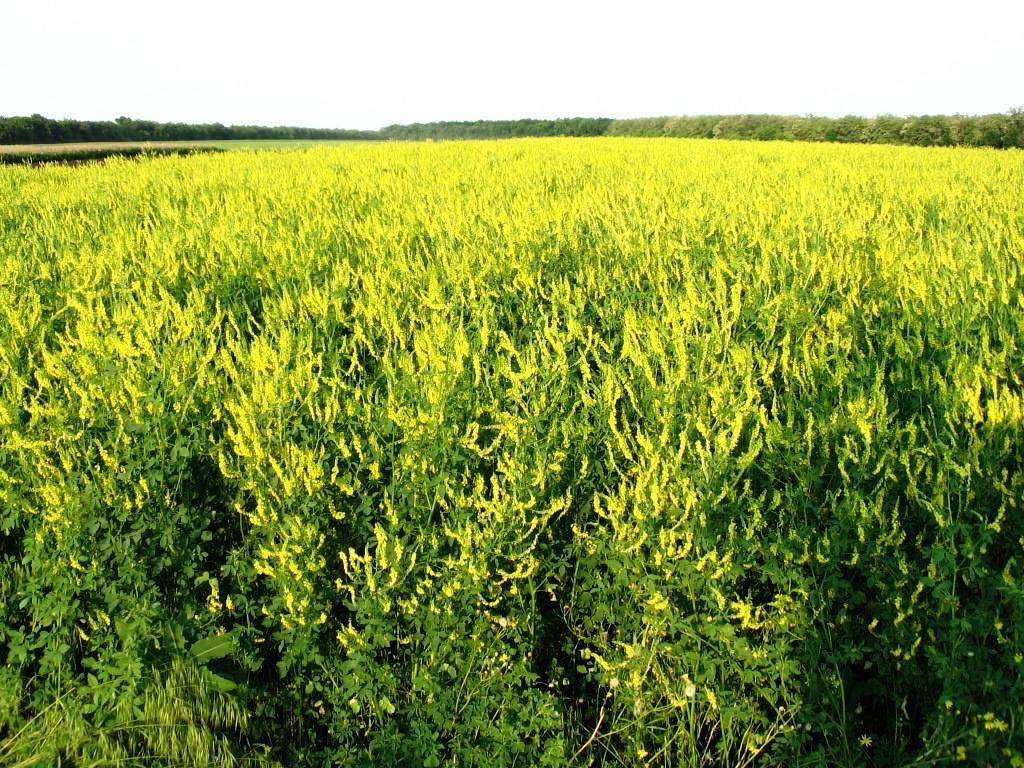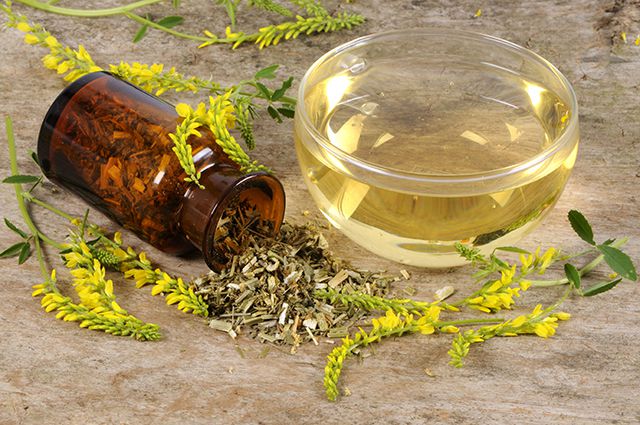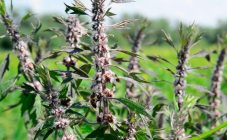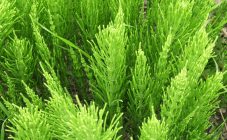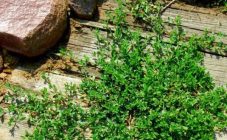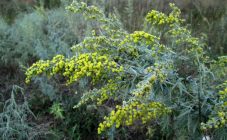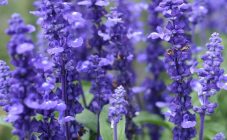Content:
In Russia, sweet clover was called "burkun grass". It was also often referred to as bottom grass and sweet clover. The modern name of this plant in translation from Greek means "honey lotus".
What does a sweet clover plant look like?
Melilot is a biennial herb that belongs to the legume family (subfamily of moths) and has medicinal properties. The bushy stem of this plant reaches 2 meters in height. Its small yellow or white (depending on the variety) flowers about 5 cm in diameter are collected in a brush.
Describing what the aerial part of the sweet clover looks like, it is necessary to add that the small leaves covering its stem have an oval-elongated shape and are attached to short roots. The root system of the plant is pivotal, developed.
Where it grows
The area of growth of sweet clover covers:
- Western Siberia;
- Kazakhstan;
- Central Asia;
- separate regions of Russia.
The wild burkun can most often be found:
- at the roadside;
- at the shore of the reservoir;
- in the steppe meadow.
However, farmers can also grow this herb on their plots.
Types and features of cultivation
The cultivated burkun is represented by several dozen species (about 50), but the most famous are the white (toothed) and yellow (medicinal) sweet clover. These are similar plant varieties, differing from each other in color of flowers.
In the yellow-colored species:
- beans with a less embossed surface;
- smoother leaf outlines;
- often lower height (about 1.5 meters).
Sweet clover is unpretentious to the composition of the soil, but still prefers non-acidic limestone soil. It is cold-resistant, but reacts negatively to sudden changes in temperature, and prefers to grow in southern regions with an air humidity of at least 60%. It tolerates drought without loss and even acquires a more intense aroma during this period. Excess moisture, on the contrary, can lead to the death of the plant.
In arid regions, sweet clover is usually sown without a cover, which brings tangible benefits in helping to achieve good mowing of greenery.
Sweet clover bears fruit with small grayish beans, inside of which are yellow seeds. The grass that appears in the first year after sowing does not give seed. She doesn't even have flowers. The budding of a plant can be observed only in the second year of its life. At the same time, it is completely covered with flowers, becoming white or yellow, depending on the variety. The approximate lifespan of each flower is 5 days.
However, there are burkun species for which this rule does not apply. They bloom already in the year of sowing. This usually applies to annual varieties.
The toothed and medicinal types of sweet clover differ in yield (when harvested from one hectare, the farmer obtains up to 215 centners of green mass) and are early ripening (the time interval from the day of sowing to harvesting is no more than 60 days).
If burkun is supposed to be used as a fodder base for livestock, agrotechnical instructions for its cultivation should be followed especially carefully. Otherwise, there is a great risk that the raw materials will soon deteriorate and cause mass death of animals.
In the second year of life, the plant is recommended to be fed with fertilizers:
- phosphate;
- potash;
- nitrogen.
This rule also applies to recently transplanted plants (they are fed in the fall).
Properties of culture and scope
Burkun is widely used in folk medicine. Most often it is used to combat:
- gout;
- joint inflammation;
- tumors;
- purulent wounds;
- abscess;
- cough;
- varicose veins and venous insufficiency;
- stagnation of milk during lactation;
- pain;
- hormonal disorders;
- ARI;
- bronchitis;
- kidney disease;
- nervous overexcitation and insomnia;
- intestinal obstruction and hemorrhoids;
- the consequences of sprains;
- diseases of the prostate and urinary tract;
- menopause and the consequences of hormonal changes during menstruation.
Decoctions and herbal teas are made from the dried herb of sweet clover, which have a calming and diuretic effect.
Foot baths with plant flowers allow you to get rid of:
- swelling;
- itching;
- fungal infections.
Gauze compresses and lotions with burkun infusion can stop weeping lesions of the skin or slight bleeding that occurs during injuries or burns.
The herb is often used as a flavoring agent for:
- tobacco;
- alcohol;
- soap;
- perfumery products.
Medicines, which include this plant, are prescribed for angina pectoris and convulsions.
The yellow-flowered species is often grown for feeding cattle and as a green manure crop. Melilot is also a highly productive honey plant. From one hectare, you can get about 320 kg of product (in annual burkuns, this figure reaches 450 kg), which is a means of maintaining the body's tone and preventing diseases. Such honey, like the plant itself, will have antispasmodic, anti-inflammatory and analgesic properties. Thanks to its use, a person can get rid of attacks of dizziness and migraines.
About diseases and pests
The main danger that the sweet clover can be exposed to is the uncontrolled growth of weeds, so the plant needs regular weeding.
This is all the more useful due to the fact that other herbs can become a source of diseases dangerous for the plant:
- septoria;
- white rot;
- oversporosis;
- powdery mildew.
The probability of relocation of diseases from other legumes is especially high, therefore, crops belonging to this family are not recommended to be planted nearby. In addition, all diseased plants should be immediately removed from the site to avoid massive contamination of crops.
How and when to collect and procure
To prepare the leaves and the flowering part of the sweet clover, you will need to properly collect and dry the plant:
- Cut the stem of the grass as close to the root as possible.
- Tear off leaves, shoots, tops and flower brushes.
- Lay out the collected raw materials evenly on paper and place everything under the canopy.
The whole procedure is carried out during the flowering period. In yellow sweet clover, it occurs in the first ten days of summer, and in white sweet clover it begins a little later, but also lasts about a month. The dried grass retains its green color and takes on a richer smell. The maximum permissible storage period for such blanks is 24 months. It will be appropriate to use them as a tea leaves or as a seasoning for soup or fish, which gives the dish more piquancy.
Melilot is an unpretentious plant that can take root well in wastelands, in ravines, so it is quite simple to grow it.The herb has many beneficial properties due to which it is widely used in folk medicine to treat various diseases.
